As we get further and further away from December 25th, I’m trying to stick to the theme but keep things a bit less obvious. This softly subtle and desaturated coordination is still within the realm of festive greens and reds, but in a much less in-your-face way.
The flowers on this kimono may lean more towards the pink spectrum since they’re so pale, but I think pulling in the darker tones on the haneri and obiage bring it back towards the richer tones. This is definitely a more transitional outfit than some of the previous ones, but I think it still accomplishes what I was aiming for so overall, I’m pleased.
While I’m happy with the coordination, the kitsuke itself is a mess. The mannequin’s shape has never been perfect for kitsuke (I have to use padding on her!) but it seems more obvious than normal today. I also couldn’t get the obiage to cooperate, so I tied it in a Lyuba-style bow. I’m sure there’s a proper name for that, but I will forever associate it with Lyuba of Strawberry Kimono, so there you go. The ohashori is also a rumpled mess but it’s late and I have work tomorrow, so I don’t have the energy to redo it and take new photos.
By the way, next time I get a harebrained idea like changing the mannequin every day for twelve days in a row, someone please talk me out of it! The end is in sight but I’m running out of steam. XD
Items used in this coordination
- Misty Green with Kiku
- Cream with Red
- Reversible embroidery (side b)
- Maroon Rinzu
- Brown with Lime

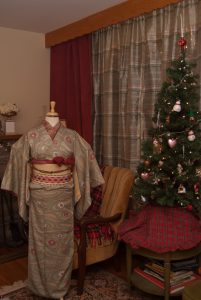

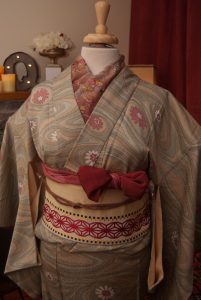
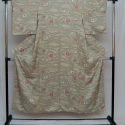

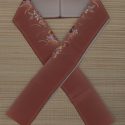
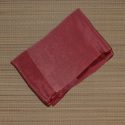
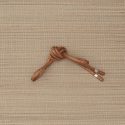
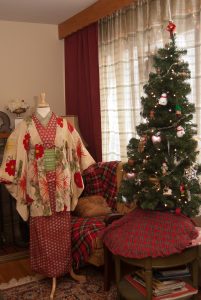
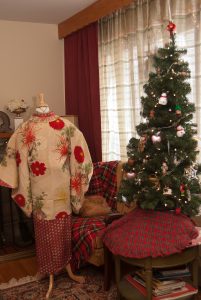
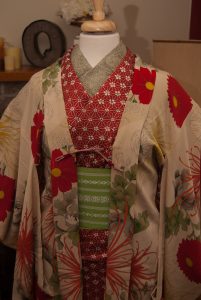
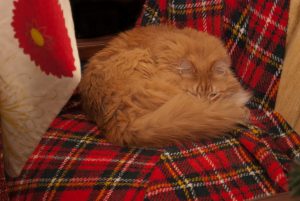

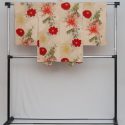
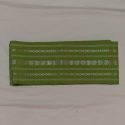
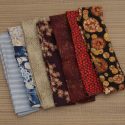

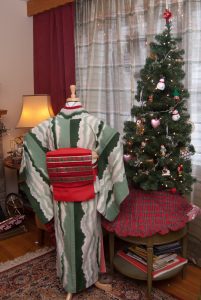
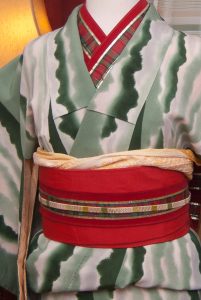
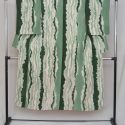
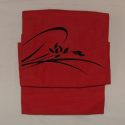

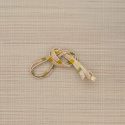
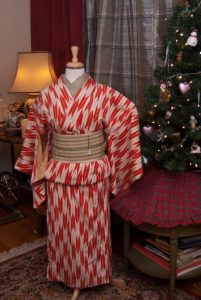
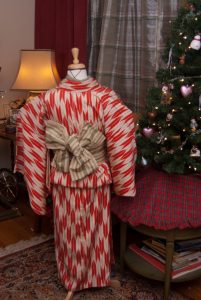
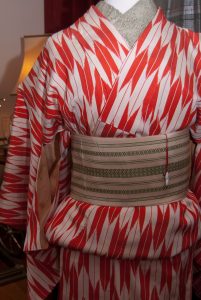

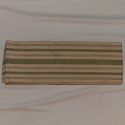
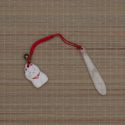
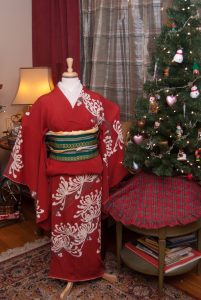
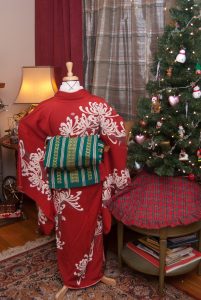

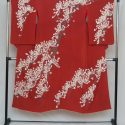
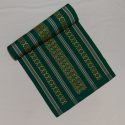
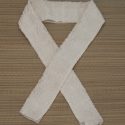
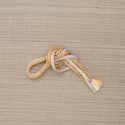











 Bebe Taian
Bebe Taian CHOKO Blog
CHOKO Blog Gion Kobu
Gion Kobu